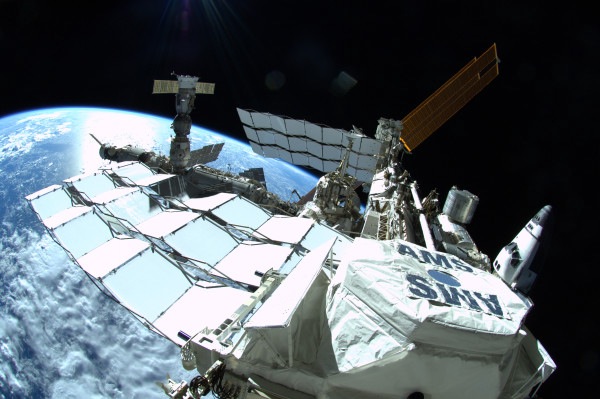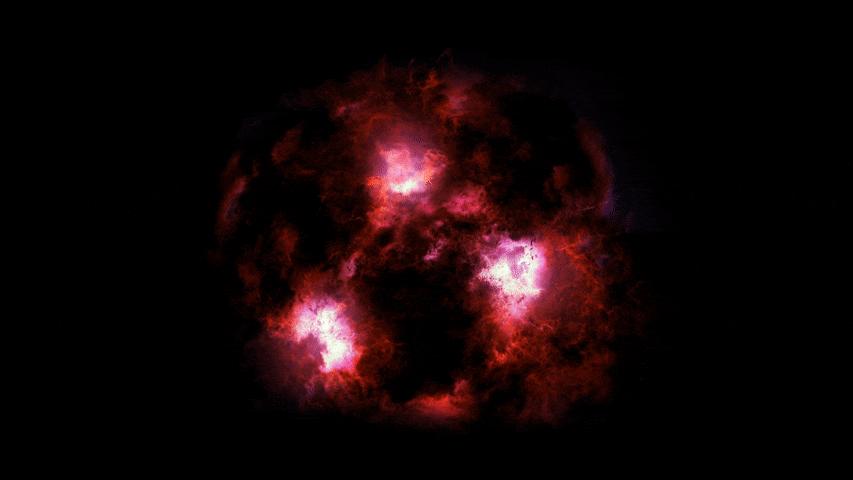When you purchase through radio link on our site , we may realize an affiliate mission . Here ’s how it works .
Something is n’t quite right in the universe . At least base on everything physicist know so far . Stars , galax , black hole and all the other celestial object are thrust away from each other ever faster over time . preceding measurements in our local neighborhood of the world find that the world is exploding outward quicker than it was in the showtime . That should n’t be the case , base on scientist ' good descriptor of the universe .
If their measurement of a note value known asthe HubbleConstantare correct , it intend that the current model is missing crucial new physics , such as unaccounted - for fundamental particles , or something foreign going on with the mystifying substance known as sour energy.[5 Elusive Particles Beyond the Higgs | Quantum Physics ]

This Hubble Telescope image shows a doubly-imaged quasar, which can be used to measure the Hubble constant. A new technique of measuring the Hubble Constant from such doubly-imaged quasar systems could help astronomers better understand how the universe’s expansion rate has changed over time.
Now , in a new work , published Jan. 22 in the journalMonthly Notices of the Royal Astronomical Society , scientists have measured the Hubble Constant in an entirely new way , confirming that , indeed , the universe is expanding quicker now than it was in its early days .
“Something interesting going on”
To explain how the universe fail from a tiny , hot , dense speck of bathetic plasma to the Brobdingnagian surface area we see today , scientist have proposed what ’s eff as the Lambda Cold Dark Matter ( LCDM ) model . The model puts constraints on theproperties of dark issue , a kind of matter that exerts gravitative drag but let loose no light , and dark energy , which seems to fight down gravity . LCDM can successfully regurgitate the structure of galaxies and the cosmic microwave background — the population ’s first light — as well as the amount of hydrogen and helium in the universe . But it ca n’t explicate why the world is expanding faster now than it did ahead of time on . [ Big Bang to Civilization : 10 Amazing Origin Events ]
That means that either the LCDM model is wrong or the measurements of expansion rate are .
The new method aims to at last settle the expansion - rate argument , Simon Birrer , a researcher at the University of California , Los Angeles , and guide writer on the new study , told Live Science . So far , the raw , main mensuration confirm the divergence , evoke new physics may be want .

To peg down Hubble ’s Constant , scientist had previously used several dissimilar methods . Some used supernova in the local universe ( the nearby part of the universe ) , and others have rely onCepheids , or types of stars that pulsate and regularly flicker in cleverness . Still others have studied the cosmic backdrop radiation .
The new research used a proficiency that involve brightness level from quasar — super bright galaxies powered by monolithic black holes — in an effort to break the tie .
" No matter how careful an experiment is , there can always be some burden that is built into the sort of tools that they ’re using to make that measurement . So when a mathematical group come along like this and employ a altogether different set of tools … and gets the same resolution , then you’re able to middling quickly reason out that that resolution is not a answer of some serious effect in the proficiency , " say Adam Riess , a Nobel laureate and researcher at the Space Telescope Science Institute and at Johns Hopkins University . " I think that our self-assurance is grow that there ’s something really interesting going on , " Riess , who was not ask in the report , told Live Science .

Seeing double
Here ’s how the technique worked : When light from a quasi-stellar radio source passes an interfere galaxy , gravitational attraction from the coltsfoot causes that light to " gravitationally bend"before hitting Earth . The galaxy acted like a lens to twist the quasar ’s lighting into multiple copy — most ordinarily two or four depending on the alliance of the quasar in intercourse to the galaxy . Each of those copy traveled a slightly different course around the galaxy .
Quasarsdon’t normally shine steadily like many stars . On write up of cloth fall into their central black holes , they change in brightness on scales of time of day to meg of years . Thus , when a quasar ’s image is lensed into multiple copy with unequal calorie-free way , any change in the brightness of the quasar will result in a pernicious flickering between the copy , as lighter from sure written matter take a touch longer to get through Earth .
From this variance , scientists could precisely determine how far we are from both the quasar and the intermediary galaxy . To calculate the Hubble Constant , astronomers then compared that length to the object ’s redshift , or the shift in wavelengths of illumination toward the red end of the spectrum ( which showshow much the aim ’s light has stretched as the macrocosm boom ) .

meditate illumination from system that make four range of a function , or copies , of a quasar has been done in the past tense . But , in the unexampled paper , Birrer and his partner successfully show that it is possible to measure the Hubble Constant from systems that produce just a double image of the quasar . This dramatically increases the numeral of systems that can be studied , which ultimately will reserve the Hubble Constant to be measure out more precisely .
" image of quasars that appear four times are very uncommon — there are peradventure only 50 to 100 across the whole sky , and not all are shiny enough to be measured , " Birrer told Live Science . " Doubly- lensed systems , however , are more frequent by about a factor of five . "
The new resultant role from a double - lensed system , flux with three other previously assess four-fold - lensed systems , put the value for the Hubble Constant at 72.5 kilometers per second per megaparsec ; that ’s in agreement with other local universe measure , but still around 8 percent gamey than measurements from the distant universe ( the former , or former , universe ) . As the new proficiency is applied to more systems , researchers will be able to home in on the exact difference between distant ( or former ) universe and local ( more late ) universe measurements .

" The keystone is to go from a period where we ’re enounce , yeah , these thing do n’t gibe , to having a very precise measure of the level to which they do n’t agree , because finally that will be the clue that allows hypothesis to say what is buy the farm on , " Riess evidence Live Science .
Accurately measuring the Hubble Constant helps scientist realize more than just how tight the existence is flying apart . The value is imperative in determiningthe age of the universeand the physical size of it of distant galaxies . It also give astronomers clues as to the amount of dark topic , and sorry energy , out there .
As for explicate what possibly alien physics might explain their mismatch in expansion - pace mensuration , that ’s way down the line .

Originally publish onLive Science .













